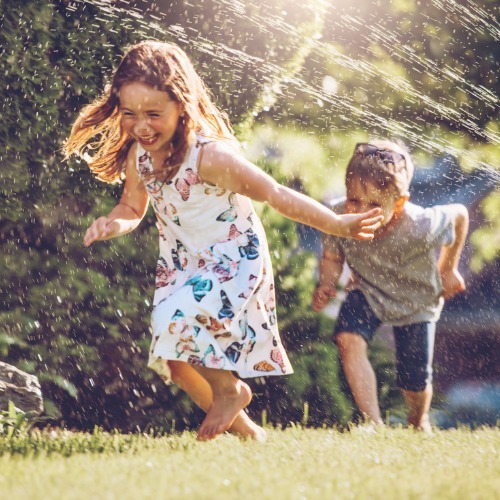As winter comes to an end and we embrace the warmer weather, some challenges may arise for parents of autistic children. Seasonal transitions, especially from winter to spring, can bring about new experiences, changes in routines, and sensory challenges. In this article, we will provide helpful tips and strategies to make this transition as smooth as possible for your child.
Prepare Your Child for the Upcoming Transition
Children with autism often have difficulty adapting to changes in their environment and routines. One of the core symptoms of autism is a preference for predictability and sameness, which can make unexpected changes in their routine or environment very distressing for them. This can result in anxiety, stress, and even behavioral outbursts.
Children with autism may have difficulties with social communication and understanding the perspectives of others, which can make it harder for them to understand why changes are necessary or to anticipate the consequences of those changes. You can help them cope by preparing them for upcoming changes. This includes the onset of a new season.
Let Them Know in Advance That Change is Coming
To ease the transition, start preparing your child for the change of season. Talk to them about what they can expect during spring, including warmer weather, longer days, and the arrival of new plants and animals.
Make a Plan for Your Child and Share It with Them
Develop a plan that includes gradually adjusting bedtime routines, introducing new spring activities, and setting expectations for outdoor play. By involving your child in the planning process, they will feel more prepared and in control of the upcoming changes.
Teach Your Child About Spring Weather and What Comes with It
Discuss the warmer temperatures and help your child understand the importance of staying hydrated, wearing sunscreen, and dressing appropriately for the weather.

New Bugs and Animals Coming Out
Talk about the various bugs and animals they might encounter in spring. For children with a fear of bugs, approach this topic sensitively and offer coping strategies or tools to help them feel safe.
Different Activities and Holidays to Participate In
Spring brings new opportunities for outdoor play and seasonal events. Share a calendar of upcoming activities and holidays, such as summer vacation, the Fourth of July, or local festivals, and encourage your child to participate.
Changes with Clothing
Not only do children with autism struggle with changes to their routine, but they also often have difficulty adjusting to a seasonal wardrobe change. It may be that they have to put away their favorite sweater or hat that gives them comfort, or they have to physically adjust to the different fabrics that are worn in the warmer months,
Sensory processing difficulties are common among autistic children and can make certain clothing textures, fabrics, or styles uncomfortable or overwhelming. Some children may find the sensation of tight or scratchy fabrics unbearable, while others may be bothered by the feeling of loose or flowing clothing.
Help Them Pack Up Their Winter Clothes
Guide your child through packing away winter clothes and unpacking their spring wardrobe. This hands-on activity can help them become more comfortable with the upcoming change in clothing.
Give Them a Choice in Picking Which Warm Weather Clothing to Take Out/Wear
Allow your child to choose their spring outfits, which can give them a sense of control and help reduce anxiety.
Provide Your Autistic Child with Fun Spring Activities
Build up some positive energy around the changing season with these fun activities.
Spring Scavenger Hunts
Spring scavenger hunts can be a great way to engage children in a fun and educational activity. Here are some ideas for a spring scavenger hunt tailored for children with autism:
Sensory scavenger hunt
Create a list of items for children to find with different textures, colors, and smells. For example, include things like a smooth rock, a furry leaf, a flower with a strong scent, and a soft piece of grass.
Nature scavenger hunt
Encourage children to explore the outdoors by creating a list of items to find in nature, such as a butterfly, a bird’s nest, a rainbow, a tree with pink blossoms, and a ladybug.
Spring-themed scavenger hunt
Create a list of items related to springtime, such as a tulip, a daffodil, a butterfly, a caterpillar, a bird’s egg, and a robin.
Color scavenger hunt

Encourage children to search for items of different colors, such as a red flower, a yellow butterfly, a green leaf, a blue sky, and a purple flower.
ABC scavenger hunt
Make a list of items for children to find that start with each letter of the alphabet, such as an ant, a butterfly, a caterpillar, a daffodil, an egg, and a flower.
It’s important to consider the individual needs and preferences of your child. Some children prefer to hunt alone, while others enjoy working in teams. It may be helpful to provide visual cues or use social stories to explain the game’s rules and ensure that everyone understands what is expected of them. Be sure to provide plenty of positive reinforcement and encouragement throughout the scavenger hunt to help children feel successful and motivated.
Fun Nature Activities
Take advantage of the warmer weather and enjoy the outdoors together.
Nature Walks
Take your child for a leisurely walk in a park, forest, or any other natural setting. Encourage them to take their time, look around, observe, and ask questions. You can also play games such as spotting animals, identifying plants, or counting different types of birds.
Camping
If handled correctly, camping can be a fun and exciting activity. It allows them to experience nature up close and develop their sensory skills. You can set up a tent in a quiet location and spend the night in the great outdoors.
Picnics
A picnic in the park or at the beach can be a relaxing and enjoyable family activity. You can bring along their favorite snacks and drinks and spend some quality time together in a natural setting.
Nature Crafts
Engage your child in creative activities such as making nature-themed crafts, like leaf rubbings, flower pressing, or painting rocks. These activities are not only fun but also help children with autism to develop their fine motor skills and sensory abilities.
Gardening
Planting seeds, watering plants, and watching them grow can be a calming and therapeutic activity for children with autism. Gardening helps them connect with nature, learn about the different types of plants, and develop their sensory skills.
Animal Watching
Taking your child to a local zoo, aquarium, or nature reserve can be a great way to learn about different animals and their habitats. Encourage them to observe and interact with the animals and answer their questions about them.
Sports
Introduce your child to spring sports like soccer, baseball, or just playing catch in the backyard.
Swimming is an excellent sport for kids with autism, as it can be a relaxing and sensory-friendly activity. It also provides a low-impact workout to improve their physical fitness and coordination. So as the weather warms up, consider enrolling your child in swim lessons or visiting a local pool.
Science Experiments
Here are a few spring-themed science experiments that can be both fun and educational:
Flower Dissection
Gather a few different types of flowers and let your child use safety scissors or a plastic knife to dissect them. Talk about the different parts of the flower, such as the petals, stem, and stamen, and what each part does. Encourage your child to use their senses to explore the flowers, smelling, touching, and feeling the different textures.
Butterfly Life Cycle
Use pictures or plastic models to teach your child about the life cycle of a butterfly. You can also create a butterfly garden and observe the different stages of the life cycle, from caterpillar to chrysalis to butterfly.
Sprout Observation
Plant seeds in a clear plastic cup or jar and watch them sprout and grow. Talk about the different stages of plant growth, from seed to sprout to full-grown plant. Encourage your child to water the plant and observe it each day to see how it changes.
Bug Hunt
Go on a nature walk and look for bugs, such as butterflies, bees, and ladybugs. Use a magnifying glass to get a closer look at the bugs and talk about their characteristics and behaviors. You can also create a bug habitat by filling a container with leaves, sticks, and dirt and adding bugs to observe.
Remember to always supervise your child during these experiments and ensure they are safe and appropriate for their age and abilities.
Hello, Summer!
Although transitioning from winter to spring can be a challenge for children with autism, with patience and preparation, you can help make this change a positive experience. By following these tips and incorporating fun activities, you’ll create a supportive environment for your child to thrive during this seasonal transition.
Ready to support your child’s growth and development further? Circle Care Services will guide you along your way! Sign up for more tips and resources on helping your autistic child confidently navigate the world.


